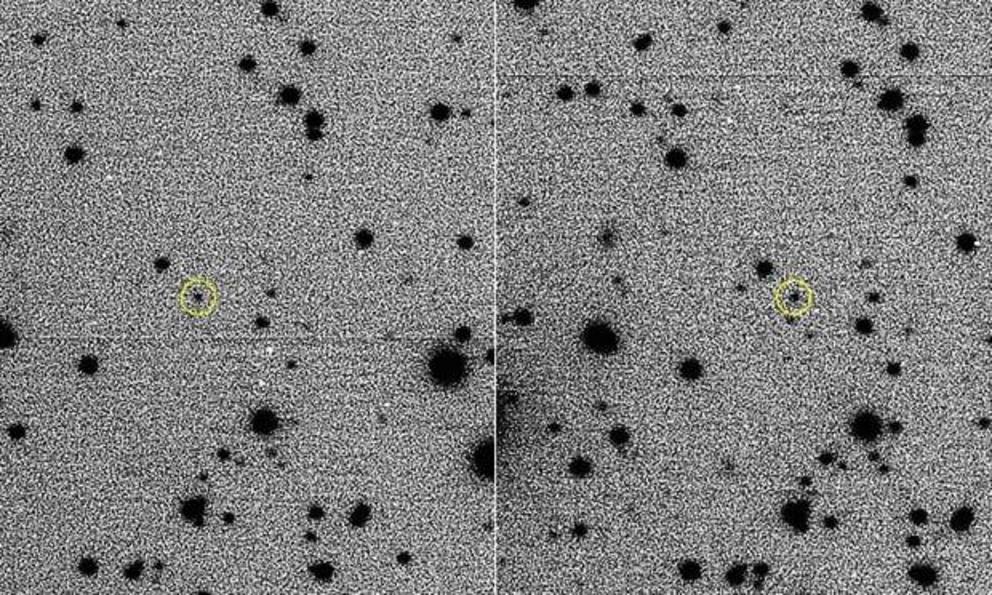Asteroid from another star system found orbiting wrong way near Jupiter
For the first time, a permanent member of our solar system has been found to have originated elsewhere
A permanent visitor from interstellar space has been found in our solar system, astronomers studying an asteroid orbiting our sun have revealed.
While collisions with Earth by comets and asteroids from within our solar system are thought to have brought organic material and water necessary for life to emerge, experts say the latest discovery suggests bodies from beyond the solar system might have also have played a role.
“It would be very interesting to go and observe it more and understand its composition,” said lead author Dr Fathi Namouni from the Observatoire de la Côte d’Azur.
“Before [the discovery of this asteroid], we only had to work to explain solar system phenomena with the objects that are in the solar system and thought to be part of the solar system all the time,” he said. “Now we have new sources of material that actually influenced the solar system – and so the solar system did not grow up in isolation.”
The latest discovery marks the first time an asteroid that appears to be a permanent member of our solar system has been revealed as having its origins in another star system. ‘Oumuamua, an asteroid spotted hurtling through our solar system earlier this year, was only on a fleeting visit.
Known as asteroid 2015 BZ509, the permanent visitor is about 3km across and was first spotted in late 2014 by the Pan-Starrs project at the Haleakala Observatory in Hawaii. Experts quickly realised the asteroid travelled around the sun in the opposite direction to the planets – a retrograde orbit.
Further work on the asteroid revealed it takes the same length of time to orbit the sun as the planet Jupiter at a similar average distance, although in the opposite direction and with a different shaped path, suggesting the two have gravitational interactions.
But unpicking quite where the asteroid came from was challenging.
Asteroids that orbit the sun on paths that take them between the giant planets – Jupiter, Saturn, Uranus and Neptune – are known as centaurs, and it is thought that many might come from distant bands of material within the solar system such as the scattered disk or the Oort cloud. Several, like BZ509, are known to have retrograde paths, although how they ended up on such orbits is unclear.
What’s more, centaurs’ orbits are difficult to pin down precisely and are thought to be unstable.
But there was a clue there was something unusual about BZ509: while previous studies suggested retrograde centaurs stay gravitationally “tied” to planets for 10,000 years at most, recent work had suggested this asteroid’s orbit had been linked to Jupiter for far longer, probably as a result of the planet’s mass and the way both take the same time to orbit the sun.
Writing in the Monthly Notices of the Royal Astronomical Society, Namouni and co-author Dr Helena Morais from São Paulo State University in Brazil describe how they developed a new computer model that allowed them to produce a million possibilities for the asteroid’s orbit, each with tiny differences, and trace their evolution.
To the team’s surprise, the results reveal that the asteroid’s orbit appears most likely to have remained very similar and linked to Jupiter for 4.5bn years – in other words, since the end of planet formation. “That was completely unexpected,” said Namouni.
The discovery provides vital clues as to the asteroid’s origins. “It couldn’t be debris of the solar system because at 4.5bn years, all objects, planets, asteroids, comets in the solar system are going around the solar system in the same direction,” he said, adding that the model suggests the most likely explanation is that the asteroid was captured by Jupiter as it hurtled through the solar system from interstellar space. “It means it is an alien to the solar system,” he said.
Namouni said the asteroid is unlikely to be the solar system’s only immigrant. The computer modelling reveals that asteroids that had been captured by Jupiter but then broke free from the planet’s gravitational pull would now be orbiting the sun on a path perpendicular to the plane of the solar system. Namouni says astronomers should go on the hunt for such bodies. “When [BZ509] was captured [by Jupiter], probably it wasn’t captured all by itself, or maybe it broke up,” he said.
Dr Licia Ray, a planetary scientist at Lancaster University who was not involved in the research, said the discovery of a body from another star system in the midst of the solar system was exciting.
“That means you can get a lot of cross-contamination, for lack of a better word, of stellar planetary systems during their formation,” she said, adding that it might be that other asteroids came into our solar system and crashed into the sun, were ejected or even smashed into planets or moons – a tantalising possibility not least because the moons of Jupiter and Saturn are thought to have conditions favourable for alien life.
“It definitely could mean that you could get organic building blocks [of life] spread between different systems,” she said.
The team are now hoping to go further. “We are looking to apply our time machine simulation to the orbits of other retrograde centaurs to see where they come from,” said Namouni.
Video can be accessed at source link below.

